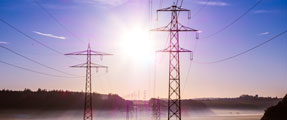On February 14, 2023, the United States Court of Appeals for the DC Circuit affirmed the Federal Energy Regulatory Commission’s (FERC) grant of qualifying facility (QF) status to Broadview Solar. The Court upheld FERC’s decision that a 160 MW solar-plus-storage project is a QF under the Public Utility Regulatory Policies Act (PURPA).
In September 2019, Broadview Solar applied for certification of its QF by FERC. Broadview Solar consists of a 160 MW solar array, 50 MW battery storage system, and inverters with a total net capacity of 80 MW. FERC initially denied Broadview Solar’s application in September 2020. After Broadview Solar requested a rehearing, FERC set aside that order in March 2021 and granted Broadview Solar’s QF status. The Edison Electric Institute and NorthWestern Energy appealed FERC’s decision. NewSun Energy and Broadview Solar intervened and filed briefs and several parties filed amici curiae, or ‘friends of the court’, briefs including Oregon Solar + Storage Industries Association (OSSIA), the Community Renewable Energy Association (CREA), Southern Environmental Law Center, the North Carolina Sustainable Energy Association, the South Carolina Coastal Conservation League, and the Southern Alliance for Clean Energy.
The issue before FERC and the Court was the proper way to calculate a facility’s “power production capacity” to determine eligibility for PURPA’s must purchase obligation. NorthWestern Energy and the Edison Electric Institute argued the relevant capacity should be measured at the solar array, which was 160 MW. FERC, Broadview Solar, and the other parties argued FERC should measure based on FERC’s precedent of the send-out approach that measures capacity at what the facility (solar array, battery, and the inverters) can send out at one single point in time, which was 80 MW. The Court concluded the proper measure of a facility’s “power production capacity” was ambiguous and upheld FERC’s interpretation as reasonable through a Chevron deference analysis. The Court also held that FERC’s interpretation was consistent with the statutory purpose of PURPA to encourage QF development. One Judge dissented arguing a traditional Chevron analysis should not be used and that a statutory interpretation analysis supports the conclusion that the Broadview Solar facility has the capacity to produce 130 MW of power.
Sanger Law represented CREA and OSSIA in these proceedings.
CREA supports business and economic opportunities through renewable energy development in a competitive environment. CREA supports use of free enterprise principles to create economically and environmentally responsible electric generation within the State of Oregon.
OSSIA advocates for clean, renewable, solar technologies. OSSIA members include businesses, non-profit groups, and other solar industry stakeholders.
Disclaimer
These materials are intended to as informational and are not to be considered legal advice or legal opinion, nor do they create a lawyer-client relationship. Information included about previous case results does not assure a similar future result.


